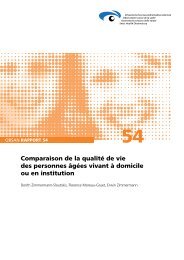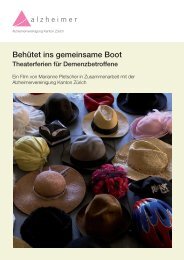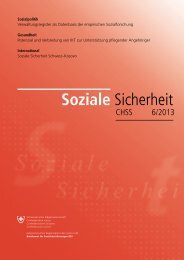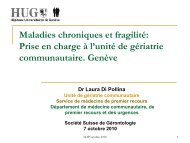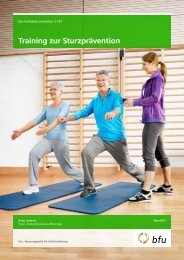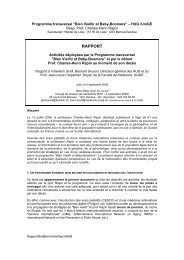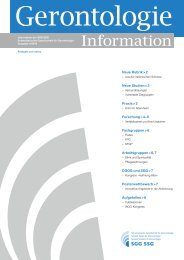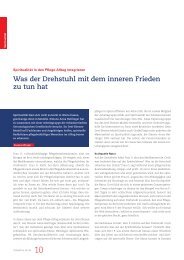Palliative care for older people - World Health Organization ...
Palliative care for older people - World Health Organization ...
Palliative care for older people - World Health Organization ...
Create successful ePaper yourself
Turn your PDF publications into a flip-book with our unique Google optimized e-Paper software.
Financial help, such as the paid compassionateleave from work introduced in Canada, may also helpto reduce the burden of in<strong>for</strong>mal <strong>care</strong>giving (5,6).Family <strong>care</strong>givers in Canada can receive up to 55%of their average insured earnings over a six-weekperiod to enable them to <strong>care</strong> <strong>for</strong> a family member.Other national programmes <strong>for</strong> financial compensationof in<strong>for</strong>mal <strong>care</strong>givers exist in Australia,France, Germany, Israel, Norway, the Netherlands,Sweden, the United Kingdom and the United Statesof America.They include:• direct financial compensation: salary, wages,allowances and vouchers;• indirect compensation: third-party payment ofpension credits or insurance premiums or taxrelief; and• labour policy: paid leave from work, incomesupport or replacement and establishing jobsecurity.Box 11.1. A group programme <strong>for</strong> family <strong>care</strong>giversA programme developed by a group in Victoria (Australia) prepares family <strong>care</strong>givers to support someonewith advanced cancer at home. The three weekly 1.5-hour group sessions involve a mix of presentations,group work and question-and-answer sessions. Caregivers found that this helped to prepare them <strong>for</strong> thecaring role, and most reported positive changes in their lives. The programme makes efficient use of availablemultidisciplinary specialist palliative staff and can be readily integrated into practice with minimal extra resources.The approximate time commitment <strong>for</strong> the facilitator <strong>for</strong> an intervention is one day per week <strong>for</strong> five weeks.The programme is currently being evaluated in the United Kingdom.Source: Hudson et al. (7).References1. Hoffmann RL, Mitchell AM. Caregiver burden: historicaldevelopment. Nursing Forum, 1998, 33(4):5–12.2. Gomes B, Higginson IJ. Factors influencing death at homein terminally ill patients with cancer: systematic review. BritishMedical Journal, 2006, 332:515–521.3. Cohen CA, Colantonio A, Vernich L. Positive aspects of<strong>care</strong>giving: rounding out the <strong>care</strong>giver experience. InternationalJournal of Geriatric Psychiatry, 2002, 17:184–188.4. Harding R, Higginson IJ. What is the best way to help<strong>care</strong>givers in cancer and palliative <strong>care</strong>? A systematic literaturereview of interventions and their effectiveness. <strong>Palliative</strong>Medicine, 2003, 17:63–74.5. Williams A et al. Canada’s compassionate <strong>care</strong> benefit: viewsof family <strong>care</strong>givers in chronic illness. International Journal of<strong>Palliative</strong> Nursing, 2006, 12:438–445.6. Keefe J, Fancey P, White S. Consultation on financialcompensation initiatives <strong>for</strong> family <strong>care</strong>givers of dependentadults – final report. Halifax, Mount Saint Vincent University,2005 (http://www.msvu.ca/mdcaging/pdfs/consultation exec_summary english.pdf, accessed 1 December 2010).7. Hudson P et al. Evaluation of a psycho-educational groupprogramme <strong>for</strong> family <strong>care</strong>givers in home-based palliative<strong>care</strong>. <strong>Palliative</strong> Medicine, 2008, 22:270–280.37





